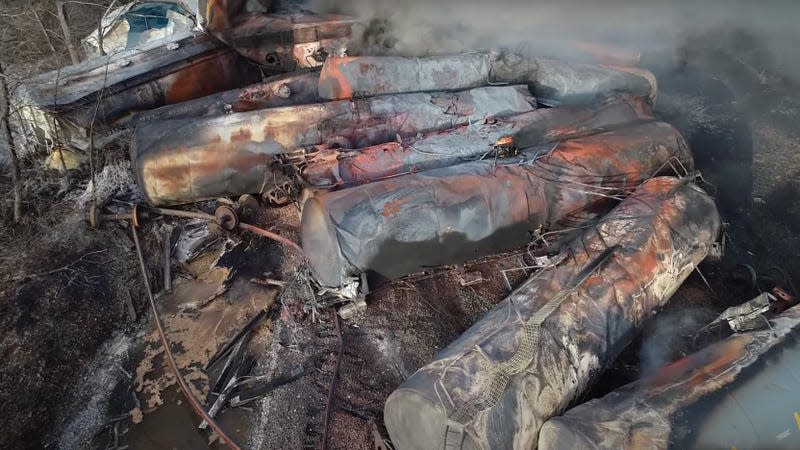Norfolk Southern Isn't Properly Testing for Deadly Chemicals at Derailment Site: Report

Weak, practically useless testing of a horrific substance at the Norfolk Southern train derailment site outside of East Palestine, Ohio, could mean misery, illnesses and premature deaths in the surrounding communities for generations to come.
That’s what independent chemical pollution researchers who reviewed the dioxin testing protocols around the derailment told the Guardian. The current culprits are dioxins, which are a byproduct of burning chloride and were likely released into the soil and groundwater when cleanup crews burned off vinyl chloride from the wreckage.
Read more
Regulators have said further testing being conducted by the Norfolk Southern-funded contractor Arcadis US will provide a broader picture than the initial samples. But, among other problems, the plan relies on what experts characterized as an “unconventional” process to check for dioxins, and the results are “unlikely to give a complete picture”, of contamination in East Palestine, said Stephen Lester, a toxicologist with the Center for Health, Environment and Justice.
“It is very limited and I don’t think it’s going to answer the questions people in East Palestine have about dioxin exposure and the risk they have from dioxin exposure,” Lester added.
Arcadis noted its plan was developed “in consultation with” the EPA, but, among other concerns, dioxin researchers who reviewed the plan noted:
So Arcadis, the company working with Norfolk Southern, plans to look around on the ground and if they don’t actually see the invisible poison, it must not be there, right?
Only, as experts point out, looking for ash on the ground six weeks after the vinyl chloride was burned off isn’t going to give researchers much of a picture of what is happening in the soil and water. Ash will have been blown or washed away by now. Also, testing only the soil, and not the actual food grown in potentially contaminated soil, won’t indicate the presence of the toxin in the most common method of dioxin poisoning.

 Yahoo Autos
Yahoo Autos 